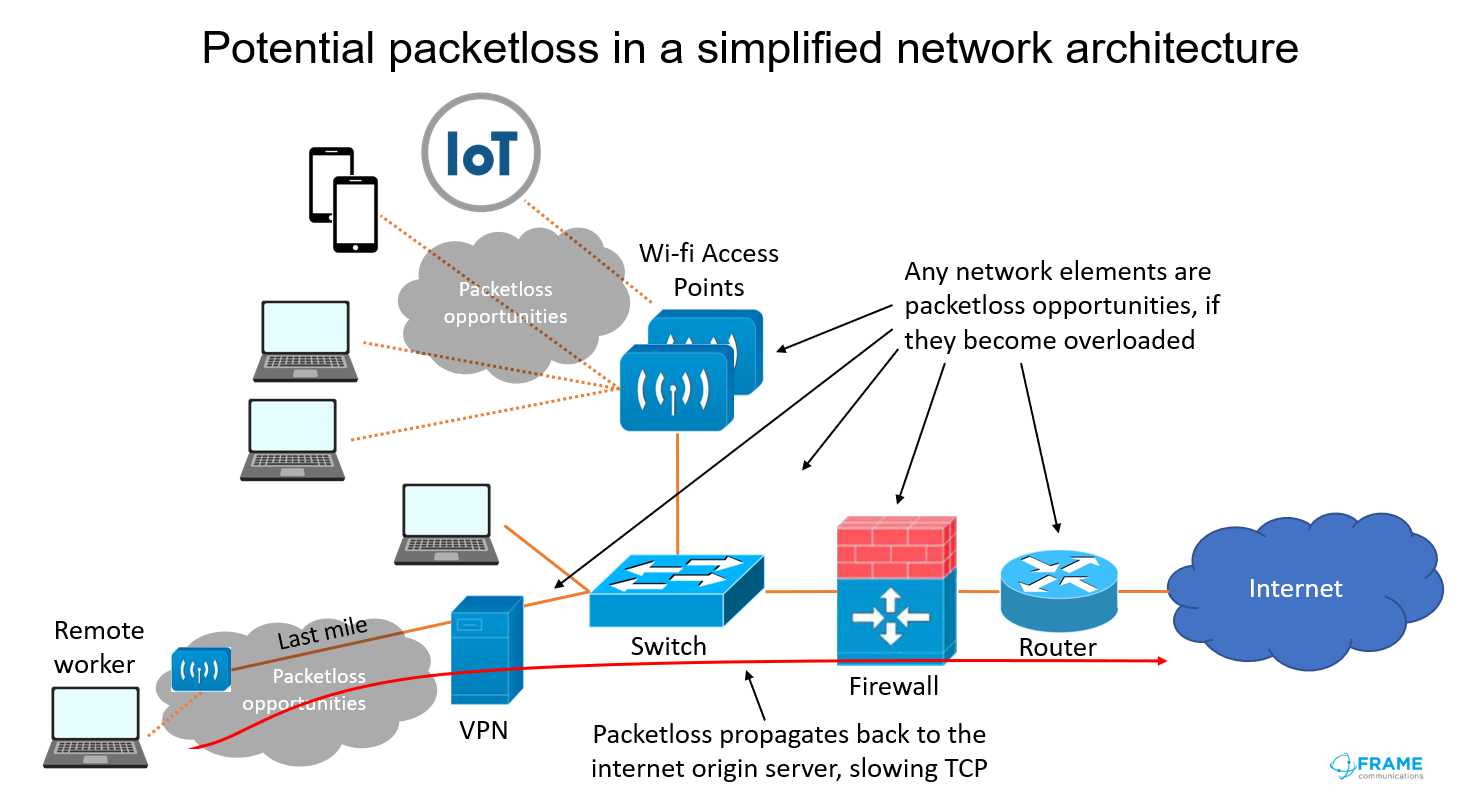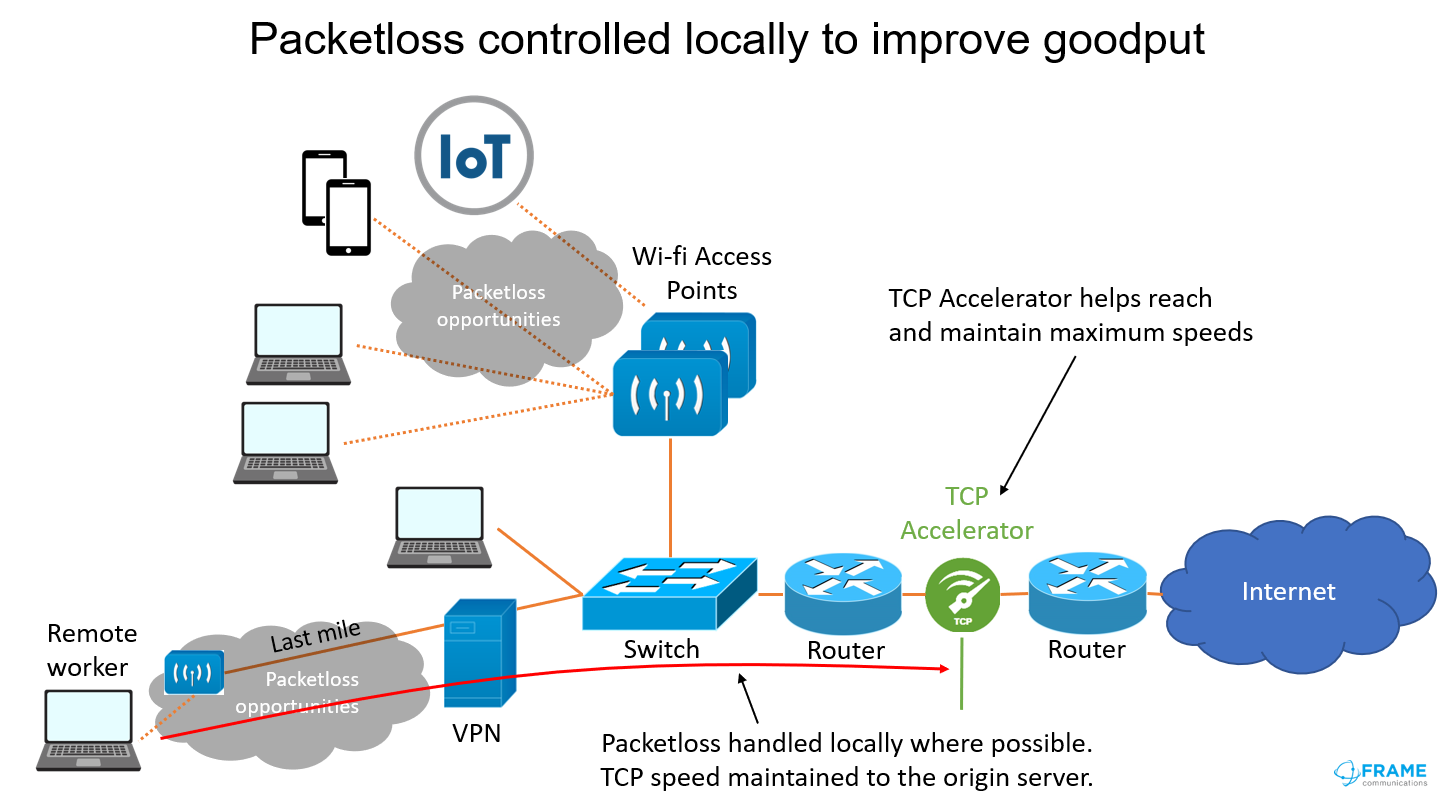Managing network pocketless
Why does network packetloss appear?
There are several possible causes of packetloss in a network, with different root causes.
- Overloaded network elements. Routers, firewalls and other elements that pass traffic can become overloaded. This happens fundamentally when packets are arriving faster than they are able to leave. As this starts to happen, the unit will start to buffer incoming packets. This can work well, often introducing some latency. If the situation becomes worse, the buffer fills and cannot accept further packets, so they are dropped, called “Bufferbloat”. This is a classic congestion based, packetloss scenario.
- Wi-fi / Mobile failures. These can occur in a wi-fi network if a user walks out of range, or interference between networks, or in a mobile network due to patchy coverage or a cell handover.
- Hardware / software issues. Failing hardware often exhibits degraded performance ahead of a complete failure and software bugs are also a packetloss source.
- Last mile connections. Unmanaged links and issues within remote locations are further sources of packetloss.
- Security threats such as DDoS. These can cause network elements to be overwhelmed, leading to bufferbloat and packetloss.

What is the impact of Packetloss?
The answer is that it depends on the service you are using. For example, most video players have their own buffer and can tolerate short packetloss, longer packetloss may lead to a drop in video resolution. VoIP, being a real time service will typically respond with audible glitches and gaps, making speech harder to understand.
Services based on TCP, such as browsing, gaming, downloads and email may be badly affected. This is because TCP does not tolerate packetloss, it is an error free transmission protocol. TCP will re-transmit lost packets AND typically slow down its speed, since TCP regards packetloss as an indication of congestion (when it is not always true).
For a deeper look at TCP Congestion, please see the related Technical Article.
How can Network Packetloss be reduced?
It may not be a realistic goal to prevent all packetloss, especially when some form of radio link is involved and of course not all sources are under a network operator’s control. However, it is realistic to mitigate the impact of packetloss and put in place controls to help prevent congestion (another source of packetloss).
Typically, this mitigation will allow a network operator to limit the impact of packetloss, so that where possible, it does not propagate all the way back to the origin server, causing a re-transmit along the whole end to end connection. Other TCP optimisations may also be possible.
Sandvine's TCP Accelerator
To control the impact of packetloss in a network, Frame recommends Sandvine’s TCP Accelerator solution. This enables network operators to control the TCP connections in their own network and prevent local issues turning into much larger end to end issues. TCP Accelerator not only manages packetloss, but has other mechanisms to help avoid TCP congestion and bufferbloat.
TCP Accelerator helps a network reach its maximum throughput faster and helps it maintain it longer. This improvement in network efficiency is often referred to as improving “goodput”.
If your network has packetloss and you are looking for a quick and simple way to boost performance, TCP Accelerator could be what you are looking for.

TCP Accelerator

Enables network operators to dramatically improve network efficiency and quality of experience (QoE), without making changes to the network infrastructure
Key benefits
Find out more
